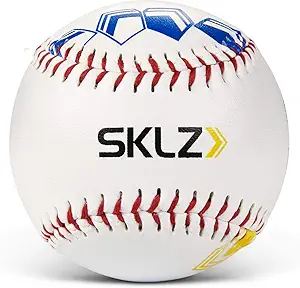Introduction
Pitching is one of the most critical elements in baseball, and mastering the art of pitching can make a significant difference in your performance on the mound. Understanding the fundamentals of baseball pitching mechanics can help you improve your skills, whether you're a novice or an experienced player seeking to enhance your game. This baseball pitching mechanics tutorial will guide you through the essential aspects of pitching, helping you unlock the secrets of becoming a dominant pitcher.
By the end of this tutorial, you will not only understand the technical skills involved in pitching but also practical ways to refine your mechanics. So, grab your glove and let's dive into mastering baseball pitching mechanics!
Setting Up Your Pitching Form
To begin your journey into effective pitching, you first need to establish a solid foundation with proper form. Your stance and footwork are the first components to consider.
Proper Stance and Footwork
A balanced stance allows you to prepare for the pitch effectively. Stand with your feet shoulder-width apart, weight evenly distributed. Your knees should be slightly bent, and your athletic stance will enable better mobility when you deliver the pitch. Take a moment to feel comfortable and confident in this starting position.
Footwork is equally essential, as it sets the foundation for your delivery. Focus on taking a smooth stride towards home plate when you begin your windup. Practicing this motion repeatedly will create muscle memory, helping you maintain control and balance when releasing the ball.
Gripping the Ball Correctly
Your grip on the ball significantly influences the pitch outcome. It’s crucial to hold the ball correctly to control spin, velocity, and direction effectively. To improve your grip with guidance, consider using the SKLZ Pitch Training Baseball. This training ball features finger placement markers that help ensure you're gripping the ball correctly. Proper grip means not just holding the ball with your fingers but also understanding the pressures and angles involved.
After mastering the grip, practice switching between different pitches to help develop versatility while maintaining a consistent hold.
Using Your Body Rotation for Power
Power in pitching comes not just from your arm but from the entire body. A fluid, coordinated body rotation generates the force required for an effective pitch. Begin by pivoting your hips and shoulders toward home plate when delivering the pitch.
Engage your core to support this motion, and let your arm follow through naturally as your body turns. This body rotation is critical for maximizing pitch speed and maintaining your control on the mound.
Mastering Your Delivery
With your setup established, the next step is mastering your delivery. This phase is pivotal for achieving accuracy and control while pitching.
Developing a Consistent Release Point
Consistency is key in pitching. Developing a reliable release point means you can consistently replicate your motion, leading to better control and accuracy. To work on this, choose a reference point—such as the pitcher's mound or the catcher’s target to focus on with each delivery.
Practice delivering the ball from the same height and position every time, which contributes to improved accuracy. Record your practice sessions to assess the level of consistency you’re achieving, and make adjustments as necessary.
Throwing Strikes with Accuracy and Control
To become a dominant pitcher, it's vital to learn how to throw strikes while maintaining control. Focus on specific areas of the strike zone. Using tools such as the Baseball Playbook can assist you in understanding how to manage different pitches based on the batter's tendencies and weaknesses.
Develop the ability to locate your pitches in the strike zone to keep hitters guessing. Repeated practice will improve your ability to throw strikes, even under pressure.
Using Different Pitches to Keep Hitters Off Balance
A successful pitcher knows how to change up pitch types to keep hitters off balance. This requires mastering various pitches, such as fastballs, sliders, and changeups. By diversifying your pitching arsenal based on game situations, you can prevent opposing batters from zoning in on your patterns.
As you incorporate new pitches, always monitor their effectiveness in practice and during games to refine your ability in utilizing them effectively.
Advanced Techniques
Once you’ve got the fundamentals down, it’s time to dive into advanced techniques to elevate your pitching game even further.
Learning to Throw Breaking Balls
Breaking balls, such as sliders and curveballs, can be game-changers. The technique required to throw these pitches is different from standard fastballs. Utilize resources like The Baseball Drill Book for comprehensive drills that teach you the mechanics of throwing breaking balls effectively.
Breaking balls rely on wrist and finger positioning. Focusing on spin creation can allow you to introduce deceptive pitches that can confuse hitters.
Mastering the Art of Changeups and Curveballs
The changeup is particularly valuable because it disrupts a batter's timing. To execute a changeup, grip the ball like you would a fastball but slow down your arm speed. This disparity forces the batter to misjudge their swing.
For curveballs, emphasize wrist rotation and finger pressure, which creates the distinctive "break" that keeps hitters off balance. Adjusting your hand position on the seams can make a significant difference in the pitch's effectiveness.
Developing a Split-Finger Fastball
The split-finger fastball is an advanced pitch that can achieve impressive results when thrown correctly. This pitch is similar to a fastball. However, you hold the ball further apart in your fingers, which creates a sharp drop as it approaches the plate.
Understanding the mechanics and practicing the split-finger approach will require patience, so ensure to take your time perfecting this pitch.
Conclusion
Having covered the major aspects of baseball pitching mechanics, it's now time to put everything together to maximize your effectiveness on the mound. Regular practice combined with long-term commitment will yield significant improvements.
Tips for Improving Your Pitching Mechanics
- Record Your Sessions: Review videos of your pitching to identify areas for improvement.
- Consistency is Key: Always aim for consistency in your stance, grip, and delivery.
- Warm-Up Properly: Always begin your practice sessions with warm-up exercises to prevent injuries.
- Use the Right Gear: Invest in quality pitching tools and resources. Consider using the Baseball Pitching MASTERY guide for comprehensive strategies or the Baseball Playbook for understanding pitch types.
- Stay Mentally Focused: Concentration is as crucial as physical preparation. Always maintain focus during practices and games.
Comparison Table: Top Products for Mastering Baseball Pitching Mechanics
| Product | Key Features |
|---|---|
| Baseball Pitching MASTERY | Comprehensive guide to mastering the art of pitching |
| SKLZ Pitch Training Baseball | Improve your grip and release with finger placement markers |
| Baseball Playbook | Learn how to throw different pitches and keep hitters off balance |
| The Baseball Drill Book | Master the art of pitching with drills and exercises |
| Baseball: How To Play The Game | Official playing and coaching manual of Major League Baseball |
FAQ
Q: What are the most important factors in mastering baseball pitching mechanics?
A: Proper stance, grip, and body rotation are crucial elements for achieving optimal performance on the mound.Q: How do I improve my accuracy and control on the mound?
A: Practice your delivery consistently and develop a reliable release point. Incorporate targeted drills to enhance accuracy.Q: What are some tips for throwing breaking balls and curveballs?
A: Use your body rotation to generate power, focus on spin, and ensure correct wrist positioning to control the pitch effectively.By using this baseball pitching mechanics tutorial as your guide, you'll not only improve your skills but also enjoy the art of pitching. Always remember to practice, stay motivated, and continuously seek to learn and evolve as a player. Happy pitching!





